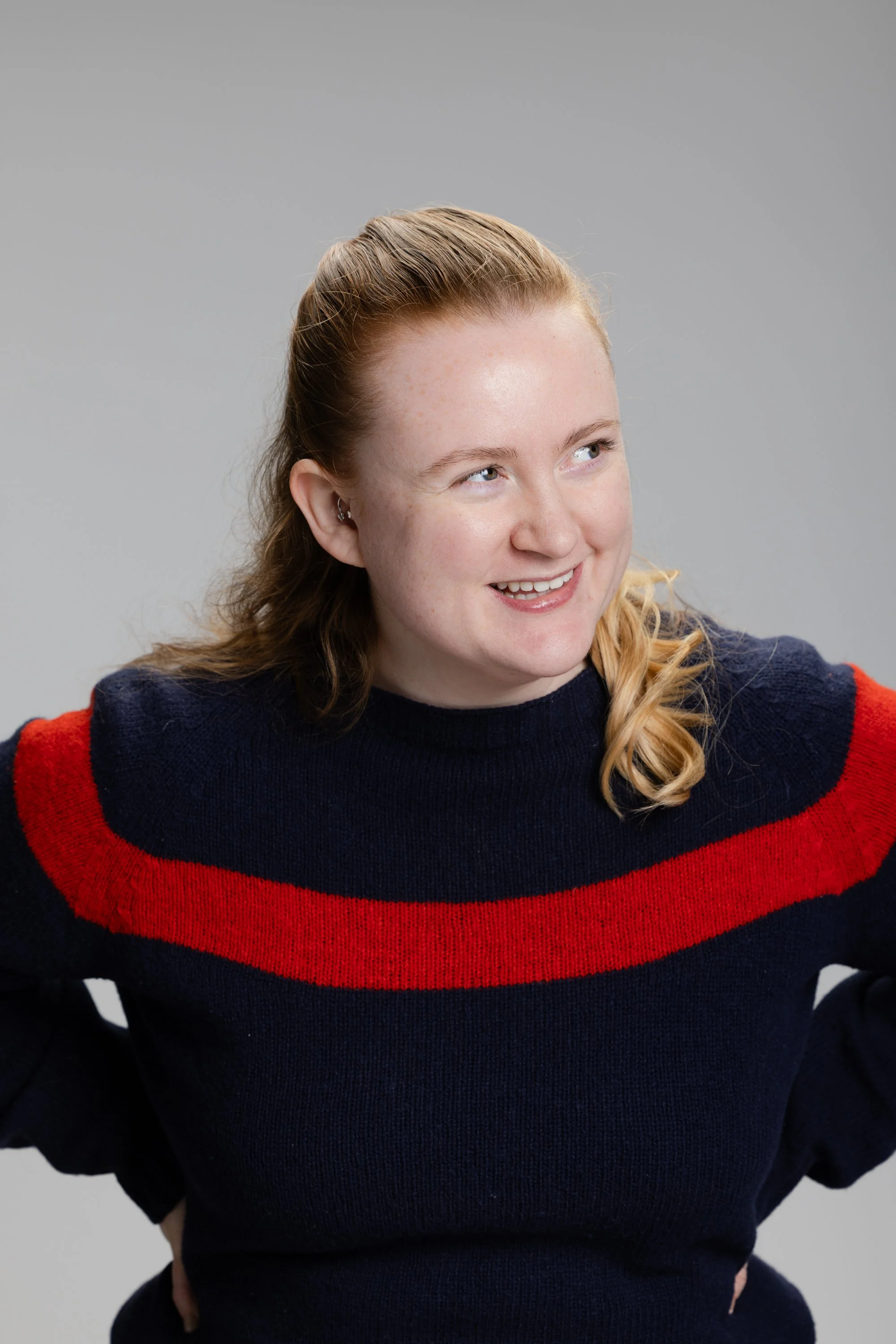SALAD Spotlight: Caitlin Miller
To celebrate the launch of our very first SALAD Sessions, created in collaboration with Scotland Re:Design, we’re shining a light on the incredible talent behind the initiative. In this edition of SALAD Spotlight, we sit down with Caitlin Miller, Director of Scotland Re:Design and a leading voice in Scottish fashion, culture and collaboration. From early breaks and creative resilience to reimagining heritage through innovation, Caitlin shares an honest and inspiring look at her journey so far and why Scotland’s creative future is one worth fighting for.
What was your first big break in the industry?
It wasn’t one singular moment, but a series of small opportunities that built momentum over time. One of the earliest and most formative was being offered a freelance role by Chris Hunt, who has continued to be a mentor and advocate throughout my career. That initial position led to a job with La Fetiche, where I spent two invaluable years developing my practice in a fast-paced, detail-driven environment. Each step has helped me carve out a space that feels true to my creative vision and values. Looking back, it’s clear how much of that was made possible by people who took a chance on me and opened doors at the right time.
Who has been the most influential person in your professional journey?
I’ve been shaped by artists, mentors, and even historical figures whose work challenges convention. But in terms of direct influence, I’d say the people I collaborate with daily who constantly push the boundaries of design, fashion, and storytelling.
If I had to single just one person out, it would again have to be my predecessor and the founder of SR:D, Chris Hunt. He has spent his career championing Scottish designers and building platforms that uplift emerging talent in meaningful, long-term ways. He gave me my first position as a freelancer, put me forward for a role with La Fetiche and also later brought me back to work with him on the SR:D fashion festival. Beyond all of that, he’s been a constant source of guidance, support, and generosity. Chris is a wonderful mentor and friend to me and many others in the industry; his impact is genuinely hard to overstate.
What’s the biggest challenge facing your industry right now?
Sustainability and ethics remain urgent priorities, but one of the most pressing challenges is the steady decline in funding for creative practice. This creates barriers, not just for emerging artists, but also for independent studios, cultural institutions and community projects across the board. It makes it harder to take risks, experiment, or sustain a practice with integrity. Beyond that, there’s a real challenge in maintaining artistic integrity in a fast-moving, highly commercialised space. Finding ways to honour craftsmanship while keeping up with digital culture and shifting consumer expectations is an ongoing balancing act.
These constraints can sometimes open space for new approaches and collaborations. Our Hidden Floors project in 2022, in partnership with Applied Arts Scotland and Fashion Interrupted, is a great example. It was a speculative digital runway created as part of a 5G research initiative, where we made a hidden floor of a museum and used augmented reality and digital fashion to explore how heritage, technology, and fashion could intersect in unconventional spaces. It was born out of limited material resources, but driven by a collaborative spirit and a desire to experiment beyond traditional models. The project was funded as a use case for the Tay5G project, outside the usual creative funding pathways. These kinds of projects hint at the potential of creative resilience when support structures fall short.
Are there any up-and-coming talents or brands that you’re currently watching?
Absolutely! I’m always excited by designers who blur the lines between fashion, history, and craft. I’m always paying close attention to the Scottish designers who show their collections at graduate fashion week, and at the degree shows, as they often draw inspiration from Scotland's rich cultural heritage. And, of course, seeing the Dior show featuring so much tartan at Drummond Castle was just magic.
How do you think consumer expectations are shifting, and how do you adapt to that?
People are moving towards more thoughtful consumption, but that may be a limited view of the consumer market. Certainly, many people are shopping more sustainably and ethically, but fast fashion continues to race forward too.
There’s also a growing hunger for storytelling in fashion and design, which I think is echoed in the new trends I’m seeing in younger generations. Fashion has always been cyclical, but the cost of living crisis, new technologies, and climate consciousness are all making new waves. I suppose the key is staying adaptable without losing sight of your core values.
What’s one piece of advice you’d offer to someone looking to break into your industry?
Say yes before you feel ready and don’t be afraid to carve out your own niche. The industry rewards those who bring a distinct perspective.
What challenges have you encountered while working from Scotland, and how did you overcome them?
Scotland has an incredible creative community, but it sometimes feels peripheral compared to global fashion hubs. I’ve overcome this by building strong networks and being proactive in collaborations. We have a lot to be proud of in Scotland.
How would you describe the creative culture in Scotland?
Vibrant, resourceful and deeply rooted in storytelling. There’s a strong sense of history here and a boldness in reinterpreting it in contemporary ways.
Get your ticket for the debut SALAD Sessions event now. Click here to find more information and secure your spot.


